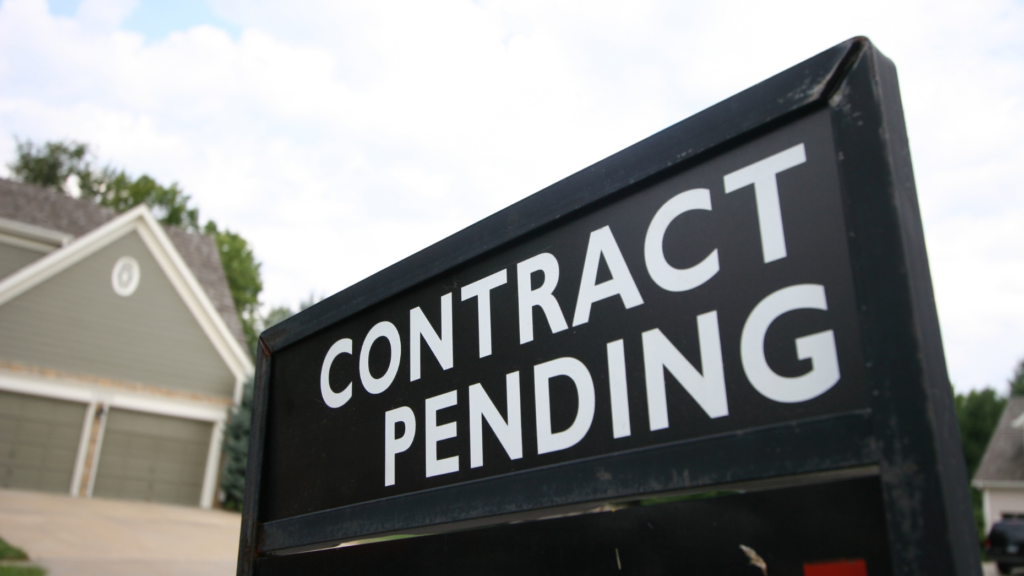While many homeowners rushed to refinance, affordability is keeping a damper on sales. Now mortgage rates are climbing again, with investors having already priced in last week’s Fed rate cut.
Whether it’s refining your business model, mastering new technologies, or discovering strategies to capitalize on the next market surge, Inman Connect New York will prepare you to take bold steps forward. The Next Chapter is about to begin. Be part of it. Join us and thousands of real estate leaders Jan. 22-24, 2025.
Mortgage lenders saw a surge of applications from homeowners rushing to refinance last week as Fed policymakers approved their first rate cut in more than four years, but homebuyer demand hardly budged — and now mortgage rates are headed back up.
Requests to refinance were up 20 percent last week when compared to the week before and 175 percent from a week ago, according to a weekly survey of lenders by the Mortgage Bankers Association (MBA).

Joel Kan
But after accounting for seasonal factors, purchase loan applications were only up 1 percent week over week and 2 percent from a year ago, the MBA survey found.
TAKE THE INMAN INTEL INDEX SURVEY FOR SEPTEMBER
Thanks in part to the seasonal slowdown in homebuying, requests to refinance accounted for 56 percent of all mortgage applications last week, MBA Deputy Chief Economist Joel Kan said — even though the level of refi requests remains “modest” compared to the boom seen during the pandemic, when mortgage rates dropped to historic lows.
Mortgage rates rebound
Rate-lock data tracked by Optimal Blue shows that rates on 30-year fixed-rate conforming mortgages hit a new 2024 low of 6.03 percent on Sept. 17.
But mortgage rates have been on the rise since then — even though the Federal Reserve kicked off what’s expected to be a protracted rate-cutting campaign the next day with a 50 basis-point reduction in the short-term federal funds rate.
Since getting tantalizingly close to dipping below 6 percent last week, Optimal Blue data shows rates on 30-year fixed-rate mortgages have rebounded, averaging 6.11 percent Tuesday.
Mortgage rates have reversed course because bond market investors who fund most mortgages had already priced in the impact of the Fed’s Sept. 18 rate cut — and also took note that central bank policymakers have charted out a cautious pace for future cuts.
Fed cutting rates for first time since March, 2020
The Fed raised the federal funds rate 11 times from March 2022 through June 2023, bringing its target for the short-term rate to between 5.25 percent and 5.5 percent — the highest level since 2001.
The “dot plot” released by the Fed last week showed that the thinking at the central bank is that short-term rates may have to come down by a total of 2.25 percentage points by 2026 to keep the economy healthy. But most Fed policymakers want to bring rates down gradually, by 1 percentage point this year (including last week’s cut) and another 1 percentage point in 2025.
If the Fed sticks to its guns, that would be a frustratingly slow pace of rate reductions for some economists who think that as inflation trends down and unemployment rises, the risk of a recession has already become the bigger concern.
Fed policymakers “revealed a streak of hubris last week with forecasts showing that a gradual easing cycle will soon arrest the deterioration of the labor market,” Pantheon Macroeconomics forecasters wrote Monday in their weekly U.S. Economic Monitor.
The Fed’s latest summary of economic projections suggests policymakers think they can stabilize unemployment at 4.4 percent in just 3 months. But it can take 18 to 24 months before changes in interest rates have their peak impact on jobs markets, Pantheon economists maintain.
“The modest easing planned by the [Fed] will be too little, too late, to stabilize the unemployment rate,” Pantheon forecasters fretted.
In a forecast that was prepared before the Fed’s rate cut but released to the public the same day, economists at Fannie Mae predicted that 2024 will be the worst year for home sales since 1995, with inventory shortages and affordability challenges putting a damper on sales in many markets.
“A further decline in mortgage rates will help improve affordability and support demand, but low inventory will likely constrain home sales until rates move closer to 5 percent,” analysts at Fitch Ratings said last week.
10-year Treasury yields are on the rise

Source: Yahoo Finance
Rates on 10-year Treasury yields, which often indicate where mortgage rates are headed, rose to 3.78 percent Wednesday — up 18 basis points from a 2024 low of 3.60 percent registered on Sept. 17. A basis point is one-hundredth of a percentage point.
Fitch analysts expect 10-year Treasury yields will still be at 3.5 percent at the end of 2026. If that prediction pans out, it means mortgage rates may not have much leeway to keep coming down.
Sub-6 mortgage rates by spring?

Source: Fannie Mae and Mortgage Bankers Association forecasts, September 2024.
Economists at Fannie Mae and the MBA still think rates on 30-year fixed-rate loans could fall below 6 percent in time for next year’s spring homebuying season.
In a Sept. 23 forecast, MBA economists said they expect rates on 30-year fixed-rate mortgages will average 6.2 percent during the final three months of 2024, and drop to 5.8 percent in Q4 2025.
Fannie Mae economists in a Sept. 10 forecast projected that rates on 30-year mortgages will average 6.1 percent during Q3 2024, and 5.7 percent in Q4 2025.
Get Inman’s Mortgage Brief Newsletter delivered right to your inbox. A weekly roundup of all the biggest news in the world of mortgages and closings delivered every Wednesday. Click here to subscribe.
Email Matt Carter

